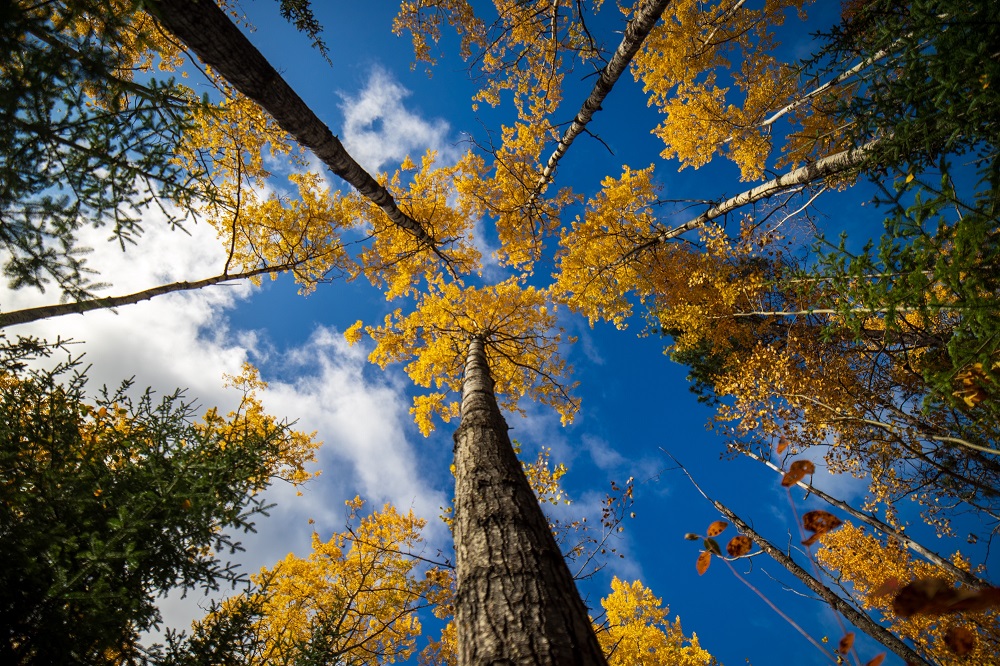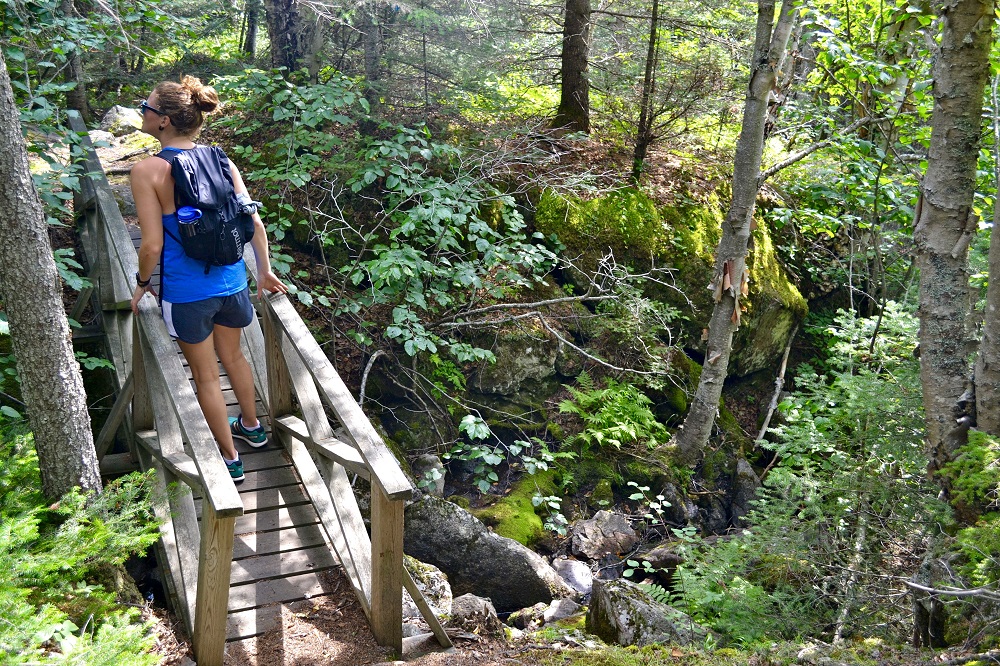Today’s post comes from Cara Freitag, past park naturalist at Neys Provincial Park.
When I first sat down to write this post, I felt doubt about whether or not people would want to read it.
“Who cares about plant rhizomes? Why would anyone read that?” I asked myself.
Well, I care about plant rhizomes. After all, they’re the reason we have a forest!
Lake Superior: the inhospitable shore
It’s incredibly difficult for anything to survive on the north shore of Lake Superior. It’s cold, windy, and spends half the year (or more) buried under snow.
Plants have to be very tough to survive here! Unlike us, they can’t bundle up in a winter jacket to stay warm or go to the grocery store to get nourishing food.

So what do they do? They find warmth in being part of a community. The connection between plants is their strength.
Many boreal forest plants grow in colonies; large patches of the forest floor are covered in the same species of plant.

I love walking through the forest and seeing colonies of Canada Mayflower (Maianthemum canadense), Bunchberry (Cornus canadensis), and Blue-bead Lily (Clintonia borealis).
What are rhizomes?
Rhizomes are underground, horizontal plant stems that send up new shoots above ground, making new plants.
The new plants are genetically identical to their mother plant, thus they also have rhizomes. Since the new plants can make even more new plants, the colonies can get very large.

Plants that use rhizomes still have flowers, but they’ve found an easier way to reproduce. This process is called asexual reproduction.
The importance of clones
Why is asexual reproduction easier?
It only requires one plant, for starters.
Many organisms (mostly plants) use asexual reproduction to make more of themselves.
It helps them spread out in the forest and get enough sunlight, nutrients, and water to survive the harsh winters on the north shore of Lake Superior’s boreal forest.

This reproduction method allows them to make new plants quickly since the new plant doesn’t have to start from a tiny seed out on its own.
Instead, the mother plant will feed it and give it energy so it can grow as fast as possible without having to rely on only a small store of energy contained in the seed.

If you’re a gardener, you may have seen this behaviour when growing strawberries.
They put out runners (or stolons), which are like rhizomes but above ground.
I planted a strawberry plant in my garden last year and didn’t think it was doing very well, but when it came back after the winter, suddenly I had eight strawberry plants when before I’d only had one!
Beyond small plants
Plants aren’t the only things able to make copies of themselves.
I had an aquarium and thought a snail would help keep the tank clean.
Unfortunately, the snail had such a great time that suddenly instead of having one snail in the tank, I had about 600. No one at the pet store had warned us that the snail was asexual and would have many, many babies if it was happy in its environment.
It’s not just small plants that use rhizomes and stolons either! Trees do too!

Trembling Aspen (Populus tremuloides) and Balsam Fir (Abies balsamea) are two tree species that also use rhizomes to make new copies of themselves.
One of my favourite sights is a Trembling Aspen stand in the fall because the trees are such a brilliant yellow.
Well, those trees aren’t individuals… they’re probably clones that have grown through rhizomes!
Energy drain
It takes a lot of energy for plants to make flowers and then berries. Why go through all that effort?
Because of diversity!
Even though plants can make copies of themselves, it’s still beneficial for them to have genetic diversity.

Having different genes available in your population means that organisms can evolve in response to environmental pressures. Being different lets you survive changes to your environment, but it takes a lot more energy than producing clones.
Each plant has a decision to make: to diversify or not? Often times they chose both!
Plants that spread asexually can also reproduce sexually, allowing them to have the advantages of population diversity while also being able to colonize harsher environments.
Who is a clone?
Many plants in the boreal forest spread through asexual reproduction.
In fact, most of them do. When you walk through the forest, chances are high that you’re walking through several clone colonies.

Working too well
Some plants have such successful family relationships through asexual reproduction that they’re both highly desired but also considered a weed.
Kentucky Bluegrass (Poa pratensis) is one of the most common lawn grass species, but it is also very hard to keep from spreading into garden beds.
Invasive species can also use rhizomes to take over areas, such as Periwinkle (Vinca minor), a common garden plant.
It takes a village
Plants can have a difficult life in the boreal forest, but they are incredibly resilient! Rhizomes are one of the reasons that they’re able to survive and thrive in harsh, inhospitable environments.
So why would anyone want to read about plant rhizomes?
It’s how plants take care of each other!

They protect against loneliness, starvation, cold, and even extinction, providing a good example of successfully working together and creating communities.
Come visit Neys and see all of our plant clones for yourself!
Neys Provincial Park is located 3¼ hours from Thunder Bay and 30 minutes from Marathon.
